Related Research Articles

Richard Aartsz, or Rijckaert Aertsz was a Dutch Renaissance painter of historical allegories. Most of his works were painted while he lived in Antwerp. He was a pupil of Jan Mostaert in Haarlem. Frans Floris became his pupil and friend.

Maarten van Heemskerck, also known as Marten Jacobsz Heemskerk van Veen, was a Dutch portrait and religious painter, who spent most of his career in Haarlem. He was a pupil of Jan van Scorel, and adopted his teacher's Italian-influenced style. He spent the years 1532–36 in Italy. He produced many designs for engravers, and is especially known for his depictions of the Wonders of the World.

Karel van Mander (I) or Carel van Mander I (May 1548 – 2 September 1606) was a Flemish painter, playwright, poet, art historian and art theoretician, who established himself in the Dutch Republic in the latter part of his life. He is mainly remembered as a biographer of Early Netherlandish painters and Northern Renaissance artists in his Schilder-boeck. As an artist and art theoretician he played a significant role in the spread and development of Northern Mannerism in the Dutch Republic.
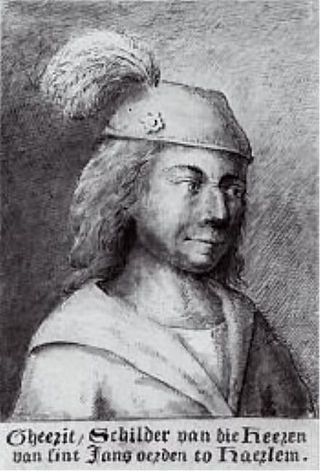
Geertgen tot Sint Jans, also known as Geertgen van Haarlem, Gerrit van Haarlem, Gerrit Gerritsz, Gheertgen, Geerrit, Gheerrit, or any other diminutive form of Gerald, was an Early Netherlandish painter from the northern Low Countries in the Holy Roman Empire. No contemporary documentation of his life has been traced, and the earliest published account of his life and work is from 1604, in Karel van Mander's Schilder-boeck.

Jan Mostaert was a Dutch Renaissance painter who is known mainly for his religious subjects and portraits. One of his most famous creations was the Landscape with an Episode from the Conquest of America.
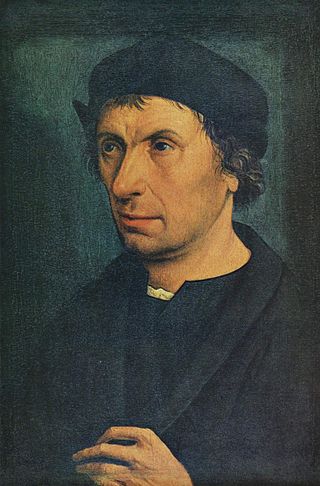
Jan Joest, also known as Jan Joest van Kalkar or Jan Joest van Calcar, was a Dutch painter from either Kalkar or Wesel, known for his religious paintings.

Albert van Ouwater was one of the earliest artists of Early Netherlandish painting working in the Northern Netherlands, as opposed to Flanders in the South of the region.
Hessel Miedema was a leading Dutch art historian and the world authority on Karel van Mander.

Jacob Cornelisz van Oostsanen was a Northern Netherlandish designer of woodcuts and painter. He was one of the first important artists working in Amsterdam, at a time when it was a flourishing and beautiful provincial town.

Jan Soens, also known as Giovanni Sons, was a Dutch painter from 's-Hertogenbosch who mainly worked in Italy.
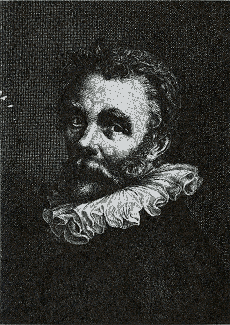
Cornelis or Cornelius Ketel was a Dutch Mannerist painter, active in Elizabethan London from 1573 to 1581, and in Amsterdam till his death. Ketel, known essentially as a portrait-painter, was also a poet and orator, and from 1595 a sculptor as well.
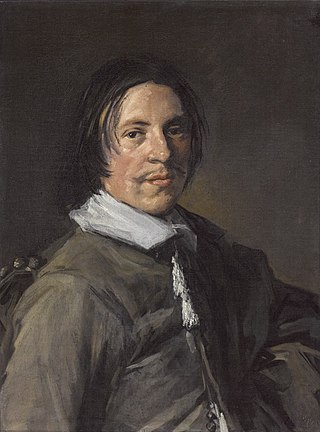
Vincent Laurensz van der Vinne (1628–1702) was a Dutch Mennonite painter, linen-weaver, and writer.

The Haarlem Guild of Saint Luke was first a Christian, and later a city Guild for various trades falling under the patron saints Luke the Evangelist and Saint Eligius.

Gillis Mostaert the Elder was a Flemish Renaissance painter and draughtsman active in Antwerp in the second half of the 16th century. He was a versatile artist who worked in various genres including landscape, genre and history painting. Gillis Mostaert was known in particular for his winter landscapes and his scenes with fires and nocturnal scenes and his works in this genre were among the most sought after pieces of his time. The artist operated a large workshop in Antwerp, which supplied works to prominent patrons. He was a regular collaborator with leading Antwerp artists of his time.
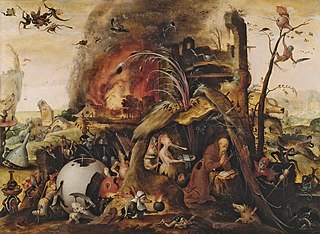
Jan Mandijn or Jan Mandyn was a Renaissance painter of the Low Countries, who worked in Antwerp after 1530. He is known for his works with subject matter and style reminiscent of Hieronymus Bosch.

Het Schilder-Boeck or Schilderboek is a book written by the Flemish writer and painter Karel van Mander first published in 1604 in Haarlem in the Dutch Republic, where van Mander resided. The book is written in 17th-century Dutch and its title is commonly translated into English as 'The Book of Painters' or 'The Book of Painting' and sometimes as 'The Book on Picturing'. Het Schilder-Boeck consists of six parts and is considered one of the principal sources on the history of art and art theory in the 15th and 16th century Low Countries. The book was very well received and sold well. Karel van Mander died two years after its publication. A second posthumous edition, which included a brief, anonymous biography of van Mander was published in 1618. This second edition was translated by Hessel Miedema into English and published in 1994-1997 together with a facsimile of the original and five volumes of notes on the text.

Gillis Coignet, Congnet or Quiniet was a Flemish Renaissance painter, who was strongly influenced by the Italian style. He painted historical and mythological subjects of an easel size, but was more successful in landscapes, in candlelight subjects, and moonlight. He was a Lutheran, which probably influenced his moves from Antwerp to Amsterdam and then Hamburg. He spent most of the 1560s in Italy.

Lucas Cornelisz de Kock or Kunst (1495–1552) was a Dutch Renaissance painter active in the Tudor court.
Frans Mostaert (1528–1560) was a Flemish Renaissance painter specializing in landscape paintings.

Herman van der Mast was a Dutch Renaissance painter from the Netherlands.
References
- ↑ Albert Simonsz in The life of Albert van Ouwater in Karel van Mander's Schilderboeck
- ↑ Miedema, Vol II, p. 259